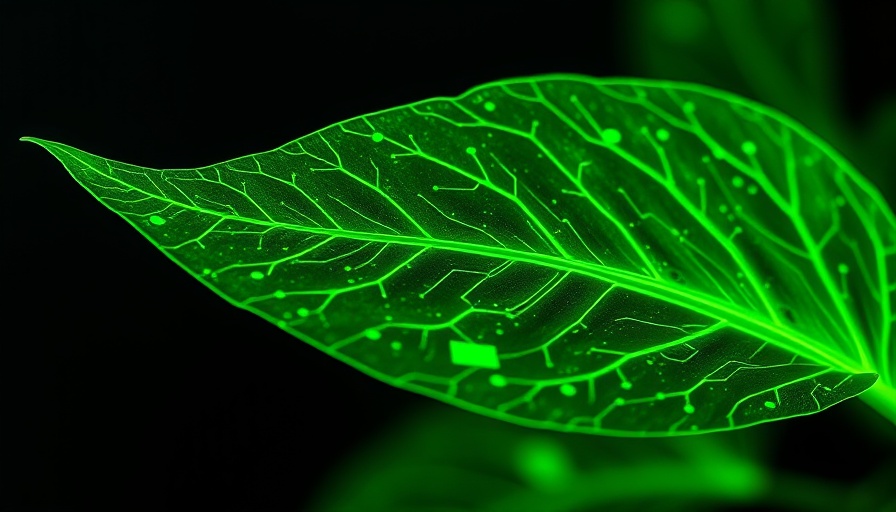
A Groundbreaking Leap in Solar Energy: The Promise of Artificial Photosynthesis
As climate change brings unprecedented challenges to our world, scientists are looking to nature for solutions that could revolutionize our approach to renewable energy. A recent breakthrough in artificial photosynthesis, a technology that replicates the natural process by which plants convert sunlight into biochemical energy, could have vast implications for enabling sustainable energy solutions. Researchers at Julius-Maximilians-Universität Wurzburg in Germany have made strides in this area, closely mirroring the processes found in plants and potentially paving the way for large-scale energy production using renewable resources.
Mimicking Nature: The Science Behind Artificial Photosynthesis
Photosynthesis is a complex biophysical process that enables plants to convert carbon dioxide and water into sugars and oxygen using sunlight. The ability to replicate this process in a laboratory could significantly change the energy landscape. The team, led by Professor Frank Wurthner, has engineered an array of synthetic dyes that serve functions analogous to those of natural pigments in plant cells, allowing them to capture sunlight and facilitate chemical reactions.
Through meticulous analysis, the researchers demonstrated how their synthesized structure absorbs light and transports charges efficiently - a fundamental function of natural photosynthesis. This breakthrough could lead to the development of new materials that convert solar energy directly into fuels, including carbohydrates or hydrogen fuel, offering hopeful solutions to our ongoing energy crises.
Hydrogels: A Complementary Path to Sustainable Energy
While the developments at JMU are promising, another innovative approach from researchers at Japan Advanced Institute of Science and Technology (JAIST) is also gaining traction. They have designed bioinspired hydrogels capable of producing hydrogen fuel directly from sunlight by splitting water molecules, a method that significantly enhances energy efficiency and reduces production costs.
These hydrogels utilize carefully structured polymer networks, which help control electron transfer—the critical step needed for effective hydrogen generation. Unlike traditional methods, which require external energy inputs, this hydrogel system combines natural mimicry with practicality, promising a cleaner, green energy alternative. Both the dye arrays and hydrogels exhibit the growing trend of using nature’s principles in innovative technologies, potentially disrupting existing energy systems.
Future Prospects: What This Means for Solar Energy
With the successful replication of essential components of photosynthesis, research teams are on the verge of transforming solar energy into a more mainstream energy source. As production processes become refined, scalable technologies will emerge, making green energy more accessible to homeowners and businesses alike. The vast potential of artificial photosynthesis lies in its ability to not only produce energy sustainably but also contribute to carbon reduction by converting atmospheric CO2 into valuable fuels.
However, many challenges remain; scientists will continue to refine these systems for industrial applications while addressing long-term stability and production scalability concerns. Achieving these benchmarks is critical to ensure that artificial photosynthesis can fulfill its promise and transform the renewable energy landscape.
Implications for Homeowners and Businesses
For homeowners and businesses looking to invest in green technologies, these advancements in artificial photosynthesis present a significant opportunity. The shift toward self-sustaining energy production aligns with a growing emphasis on net-zero emissions and environmentally responsible business practices. Adopting energy solutions derived from these innovative approaches could also yield substantial savings on energy costs while contributing positively to the environment.
Conclusion: The Viability of Artificial Photosynthesis
The breakthroughs in artificial photosynthesis highlight how understanding and replicating natural systems can yield transformative innovations in energy production. As researchers pursue further advancements, it is crucial for stakeholders in the solar and energy sectors to stay informed and open to incorporating these technologies into their energy strategies.
To learn more about how expanding your knowledge of artificial photosynthesis can shape your renewable energy strategies, consider diving deeper into the latest research and technological advancements in the field.
 Add Row
Add Row  Add
Add 




Write A Comment